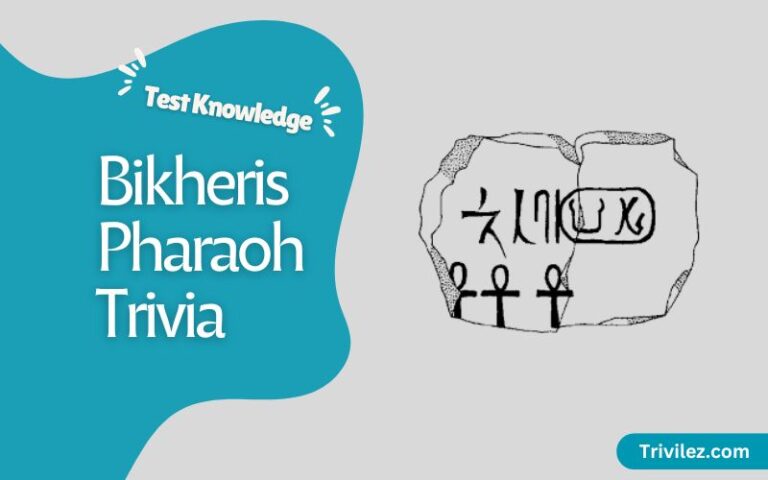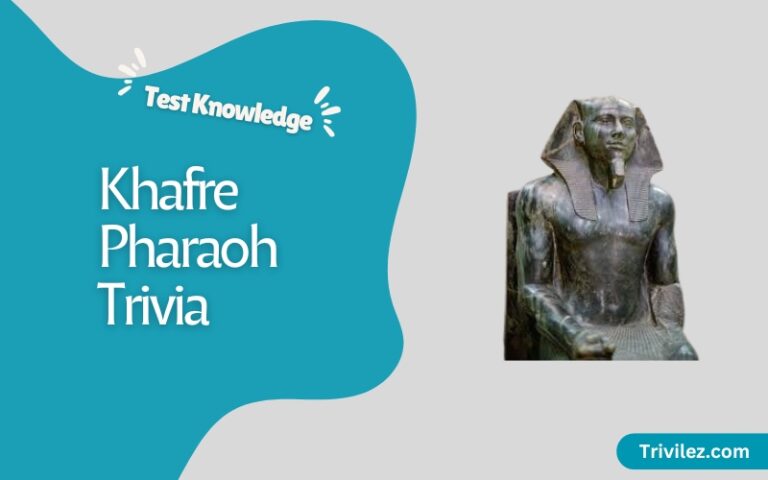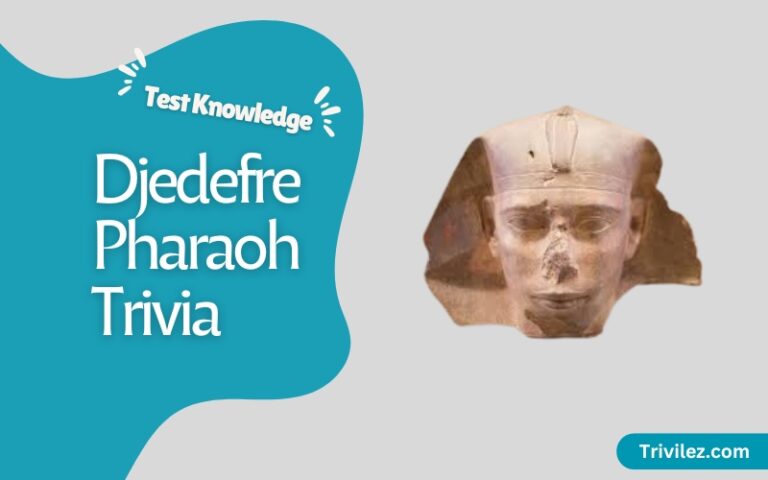Say Hi | contact@trivilez.com
27 Nebra Pharaoh Trivia Questions & Answers

Step back in time to the Second Dynasty of Egypt and uncover the fascinating reign of Pharaoh Nebra (also known as Raneb). As one of Egypt’s early rulers, Nebra played a crucial role in shaping the country’s religious and political landscape.
He is notably the first recorded pharaoh to incorporate the sun god Ra into his royal name, hinting at the early rise of solar worship. Despite the mysteries surrounding his reign, his name and legacy have been found inscribed on stone vessels, seals, and rock inscriptions in key sites like Abydos and Saqqara. This Nebra Pharaoh Trivia Quiz will test and expand your knowledge of his rule, achievements, and historical significance. Ready to explore? Let’s begin!
27 Nebra Pharaoh Trivia Quiz
Read these 27 Nebra Pharaoh Trivia Quiz questions and test your knowledge of this early Egyptian ruler! Explore his reign, religious influence, and legacy.
1. Who was Nebra?
2. What was Nebra’s other name?
3. When did Nebra rule?
4. Which dynasty did Nebra belong to?
5. Who ruled before Nebra?
6. Who succeeded Nebra?
7. What does the name ‘Nebra’ mean?
8. What is unique about Nebra’s Horus name?
9. What is the significance of Nebra’s reign in Egyptian religion?
10. Where have Nebra’s artifacts been found?
11. What type of inscriptions were found in Sinai with Nebra’s name?
12. What materials were used for Nebra’s inscribed vessels?
13. How long did Nebra rule according to Egyptologists?
14. Where might Nebra’s tomb be located?
15. Which goddess was first depicted during Nebra’s reign?
16. What political changes occurred under Nebra?
17. What evidence links Nebra to trade expeditions?
18. What suggests that Nebra promoted the cult of Ra?
19. What deity may have gained importance during Nebra’s reign?
20. What suggests Nebra may have reorganized the administration?
21. Where was Nebra’s serekh (royal symbol) discovered?
22. What was the main source of historical information about Nebra?
23. What was significant about Nebra’s connection to sun worship?
24. What is an alternative theory about Nebra’s rule?
25. What key artifacts bear Nebra’s name?
26. How is Nebra’s reign depicted in modern Egyptology?
27. What is the biggest mystery about Nebra?
Curious about more legendary Pharaohs? Check out the following Pharaoh trivia blogs for more fascinating facts!
- Narmer Pharaoh Trivia
- Hor-Aha Pharaoh Trivia
- Djer Pharaoh Trivia
- Djet Pharaoh Trivia
- Merneith Trivia
- Den Pharaoh Trivia
- Anedjib Pharaoh Trivia
- Semerkhet Pharaoh Trivia
- Qa’a Pharaoh Trivia
- Hotepsekhemwy Pharaoh Trivia
Fascinating Facts About Pharaoh Nebra
- First Pharaoh to Use “Ra” in His Name – Nebra’s reign marked the earliest link between Egyptian royalty and the sun god Ra, which later became central to Egyptian religion.
- Possible Innovator of Religious Reforms – Some historians believe Nebra may have strengthened the cult of Ra, paving the way for sun worship.
- Trade & Mining Expeditions – Inscriptions found in Sinai suggest that Nebra expanded Egypt’s reach for resources like copper and turquoise.
- Mysterious Burial Site – Unlike other early pharaohs, Nebra’s tomb has never been conclusively identified, though some believe he was buried in Saqqara.
- Political Stability & Administration – His rule possibly helped strengthen the central government after the founding of the Second Dynasty.
Conclusion
Pharaoh Nebra remains a pivotal but mysterious figure in ancient Egyptian history. His rule not only helped transition Egypt into a new era of governance but also set the stage for the worship of Ra, which later pharaohs, like Akhenaten, would fully embrace. From trade expeditions to religious transformations, Nebra’s contributions to Egypt’s legacy remain etched in stone—literally! Whether you’re an Egyptology enthusiast or just love a good trivia challenge, exploring Nebra’s history helps us appreciate the early dynastic rulers who shaped the great civilization of Egypt. Keep learning, keep exploring!








